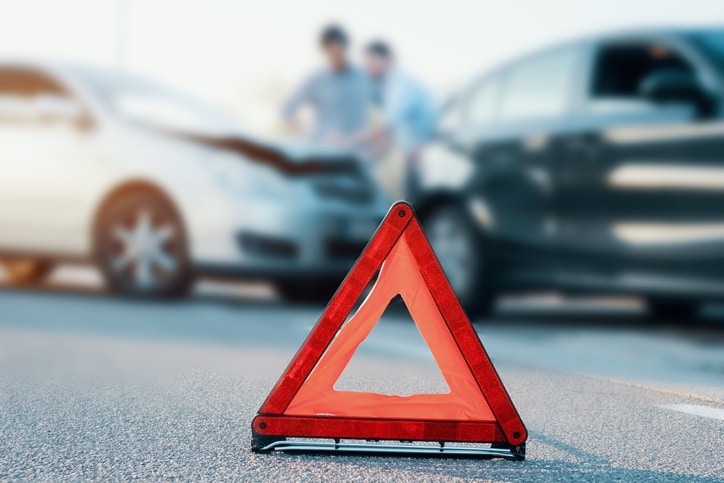
C-V2X Demonstration – safety via information on emergency vehicles approaching (with members Ford, Vodafone Germany)
Slowing down emerging vehicles can cost lives.
Discover how C-V2X can increase road safety by providing information on emergency vehicles approaching.
C-V2X Demonstration – safety via information on emergency vehicles approaching (with members Ford, Vodafone Germany)
Slowing down emerging vehicles can cost lives.
Discover how C-V2X can increase road safety by providing information on emergency vehicles approaching.

C-V2X Demonstration – focus on safety via quick reaction (with members BMW, Qualcomm, Savari, and SWARCO)
Many traffic accidents occur at traffic lights and intersections.
Discover how C-V2X technology can help in increasing safety, saving time, and lowering emissions in the video below.

C-V2X Demonstration – focus on safety via the exchange of information between ecosystem members (with Fraunhofer Institute FOKUS, Daimler, and Huawei)
Discover how the exchange of information between vehicles and their surroundings can increase road safety in the video below.
C-V2X Demonstration – focus on safety via the exchange of information between ecosystem members (with Fraunhofer Institute FOKUS, Daimler, and Huawei)
Discover how the exchange of information between vehicles and their surroundings can increase road safety in the video below.
C-V2X Demonstration – focus on safety via quick reaction (with members BMW, Qualcomm, Savari, and SWARCO)
Many traffic accidents occur at traffic lights and intersections.
Discover how C-V2X technology can help in increasing safety, saving time, and lowering emissions in the video below.

5GAA comments for ETC national standard in China
The 5G Automotive Association (5GAA) is a global, cross-industry organisation of companies from the automotive and telecommunications industries, working together to develop end-to-end solutions for future mobility and transport services.
Following its vision, 5GAA has rapidly expanded to include key players, namely the automotive manufacturers, Tier-1 suppliers, chipset/communication system providers, mobile operators and infrastructure vendors. More than 120 companies have now joined 5GAA. Diverse both in terms of geography and expertise, 5GAA’s members are committed to helping define and develop the next generation of connected mobility and automated vehicle and intelligent transport solutions.
5GAA is willing to engage with the Chinese government and eco-system to accelerate the growth of the automotive industry and connected-automated driving services in China. Regarding Electronic Toll Collection (ETC) Onboard Unit (open for public comment), 5GAA fully supports the targets to phase out physical tolling stations in China and would like to share some views on introducing C-V2X technology to fulfil this function:
- Our research and field tests indicate that C-V2X offers high network security and reliability, as well as better performance in terms of coverage and latency compared to other existing alternatives. 5GAA believes that enabling electronic toll collection (ETC) via C-V2X would offer significant benefits. 5GAA is acting to include tolling as one of the most critical use cases supported by C-V2X. In addition, we noticed that the Society of Automotive Engineers (SAE) V2X Technical Committee has worked on a similar objective. More importantly, in addition to vehicle-to-infrastructure (V2I), C-V2X supports vehicle-to-pedestrians (V2P), vehicle-to-vehicle (V2V) and vehicle-to-network (V2N), encompassing all scenarios of smart mobility;
- C-V2X is the future-proof technology to evolve from LTE-V2X to NR-V2X and so on;
- C-V2X has matured thanks to broad cross-industry support. Major carmakers are now speeding up the business cases and pre-installation of C-V2X in their vehicles. For example, 5GAA released its C-V2X deployment roadmap at the beginning of 2018 and expects the first batch of C-V2X-equipped cars to be commercialised as early as 2020.
- With regard to industry development, 5GAA believes there are two phases for C-V2X to be implemented and to enable all services needed to realise intelligent transport:
- Phase I: Utilising the existing C-V2X mature products and industry’s support, including chipset, devices, vehicles and communication equipment, to address tolling service for highway scenarios.
- Phase II: Based on C-V2X and its implementation in diverse categories of terminals like mobile phones (pre-installed and after-market), foster V2I synergy for the next ten years, e.g. highway tolling, Mobility as a Service (MaaS), for V2P, as well as road safety and coordinated driving for V2V.
5GAA believes C-V2X technology is a critical technology enabler for in-vehicle ETC technology and recommends including C-V2X into the Chinese national standard covering the Electronic Toll Collection Onboard Unit.

5GAA Meets Toronto 2019: Face-to-Face Meeting and Workshop
Toronto is hosting the next quarterly 5G Automotive Association (5GAA) Face-to-Face meeting. The event spans over five days focused on cellular-to-everything (C-V2X) technology.
The first three days will be dedicated to meetings on Working and Cross-Working Group Items. Days four and five will kick off with board and executive level discussions and a workshop on connected and automated driving in North America. These exciting events will be coupled with live demonstrations, hosted by 5GAA Canada-based members.
The 5GAA Workshop
5GAA will be hosting a workshop around ‘C-V2X: The Future of Connected and Automated Driving in North America’. With over 200 attendees expected, the event targets North American transport stakeholders, including policymakers, road traffic authorities, road operators and an array of interest groups and industry representatives. The primary objective is to raise awareness of C-V2X and the opportunity it provides to drive its adoption in North America.
The workshop will be divided in two parts, the first part will focus on an update to C-V2X development, including an overview of the European Road Map, as well as examples of recent innovation in Europe and North America. The second part will embark on a broader path, concentrating on future connected mobility. Key figures from Intelligent Transportation Systems (ITS) in North America will be presenting and take part in the day’s discussions. See workshop programme here.
Due to limited capacity, the workshop is by invitation only. Please contact liaison@5gaa.org for more information.
Live Demonstrations
5GAA members, Bell Canada and Huawei Canada, will organise two separate demonstrations of C-V2X 5G technology, 6-8 August 2019.
One demonstration, HD Mapping and Vulnerable Road User (VRU) Vehicle to Network, will take approximately 30 minutes and feature an in-vehicle live HD Map/VRU system.
The other demonstration will centre on Tele-operated Driving (ToD) Vehicle to Network technology. It will last approximately three hours at the Bell campus in Mississauga, Canada. There will be lunch served and a shuttle service to and from the Metro Toronto Convention Centre. Delegates can register here.

5GAA Supports the 3GPP 2nd 5G Vertical User Workshop
Following the first session held in Brussels on 12-13 February 2019, 5GAA returned to the second 5G Vertical User Workshop, which was in Rome on 9-10 July 2019. This initiative, launched by 3GPP Market Representative Partners (5GAA, 5G-IA, 5G-ACIA and PSCE) was organised as a collaborative event for strategic dialogue between vertical industries (technology, automotive and transport, health and public safety ) and 3GPP by exchanging on future needs and upcoming cellular standard developments.
5G networks are intended to bring a new innovative ecosystem, where actors from the vertical industries will be involved alongside the telecom operators, manufacturers, SMEs and research institutes. There is an increasing need to involve this wider range of industries to optimally capture end-user requirements and contribute to the 3GPP standardisation process. The working groups of 3GPP operate on a bottom-up basis focusing on partners contributions. As such, 3GPP notably benefits from further developing the role and usefulness of 5G vertical industries as Market Representation Partners.
The agenda for the 2nd 5G Vertical Users Workshop can be found here. The Workshop focused on 5G vertical technical viewpoints, common requirements and common interests with lively interactive discussions. 5GAA members Huawei, Nokia and Orange supported the workshop. The 5GAA CTO, Maxime Flament, had seized the opportunity to address:
- The 5GAA vision for 3GPP rel-17 as part of C-V2X and intelligent transport systems (available here)
- Predictive QoS, an innovative mechanism to provide in-advance QoS notifications from the network to the V2X application (available here)
5GAA enthusiastically supports the initiative and to enhance collaboration with partners such as 5G-IA, 5G-ACIA and PSCE.

5GAA Releases White Paper on C-V2X Use Cases: Methodology, Examples and Service Level Requirements
Several innovative automotive use cases using C-V2X technologies have emerged during the last years and many more will come in the following years in an attempt to describe novel capabilities and new features of connected vehicles. Safety, vehicle operations management, convenience, autonomous driving, platooning, traffic efficiency and environmental friendliness, society and community are some of the areas that C-V2X use cases are expected to have high impact.
This white paper describes 5GAA’s methodology in defining use cases and associated Service Level Requirements (SLRs) in a communications technology solution agnostic approach. Sequences of actions and interactions between involved actors are described as general as possible relative to the specific implementation and architecture of the overlaying cellular system. Moreover, an example set of C-V2X use cases have been described in detail and have been used to apply the 5GAA methodology. Each use case is composed of multiple use case scenarios, wherein use case scenarios can differ in terms of applicable road environment, actors involved, service flows, etc. The SLRs of the selected example use cases have been provided and analyzed in a technology and implementation agnostic way.
5GAA use cases are used by 5GAA work groups to develop C-V2X solutions, create test procedures, demos and pilots, evaluate spectrum needs and co-operate with Standards Development Organizations (SDOs) and finally create the business case and path for deployment.
Please note that this document is currently under revision
Click here to read the White Paper.


